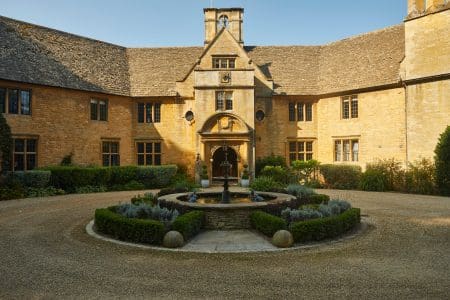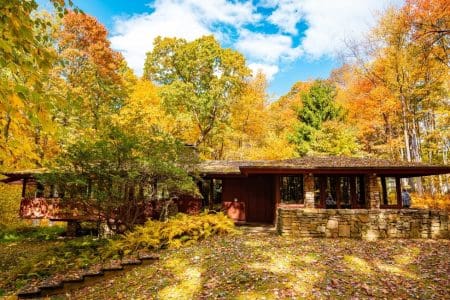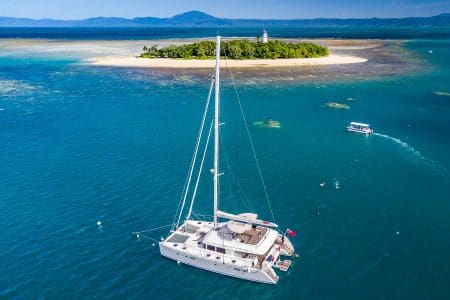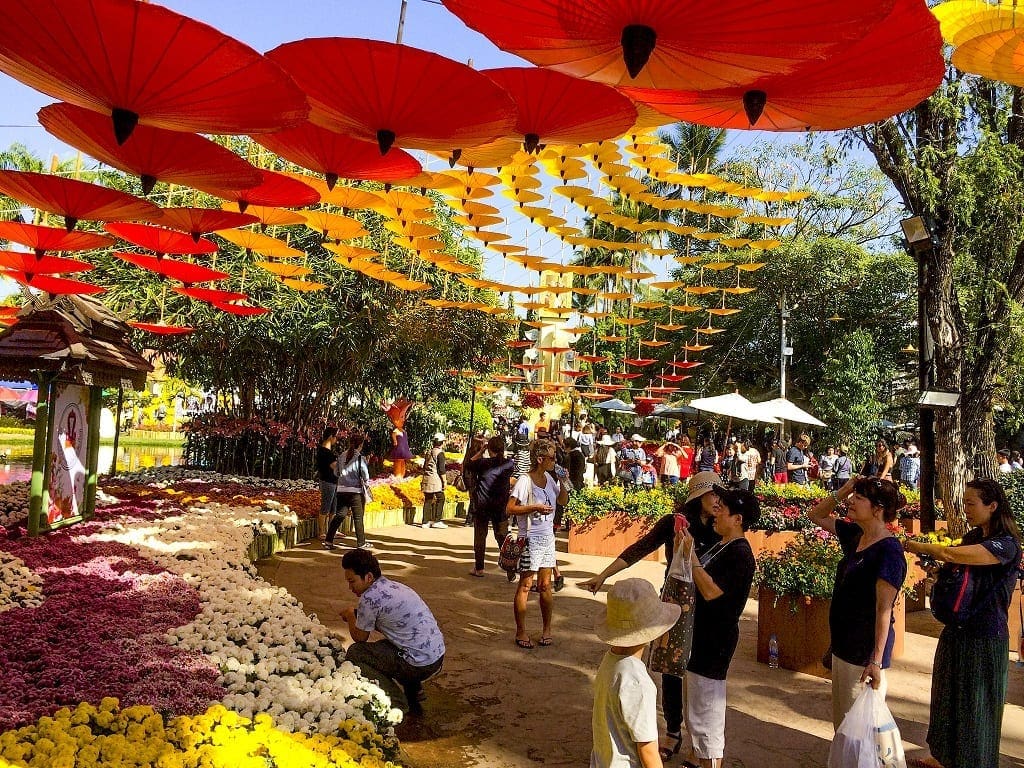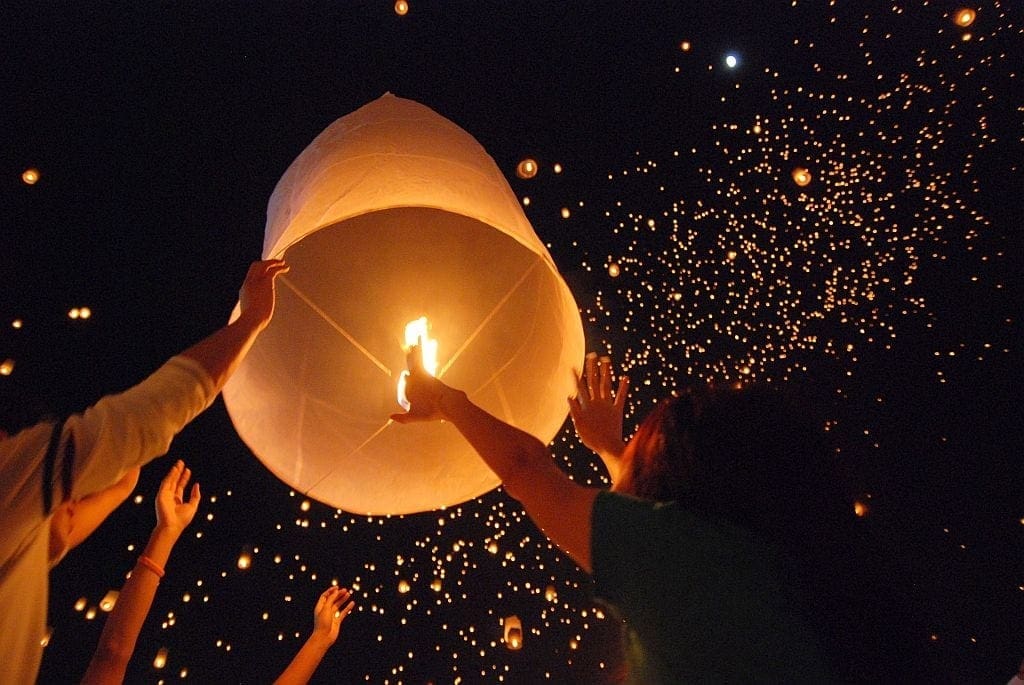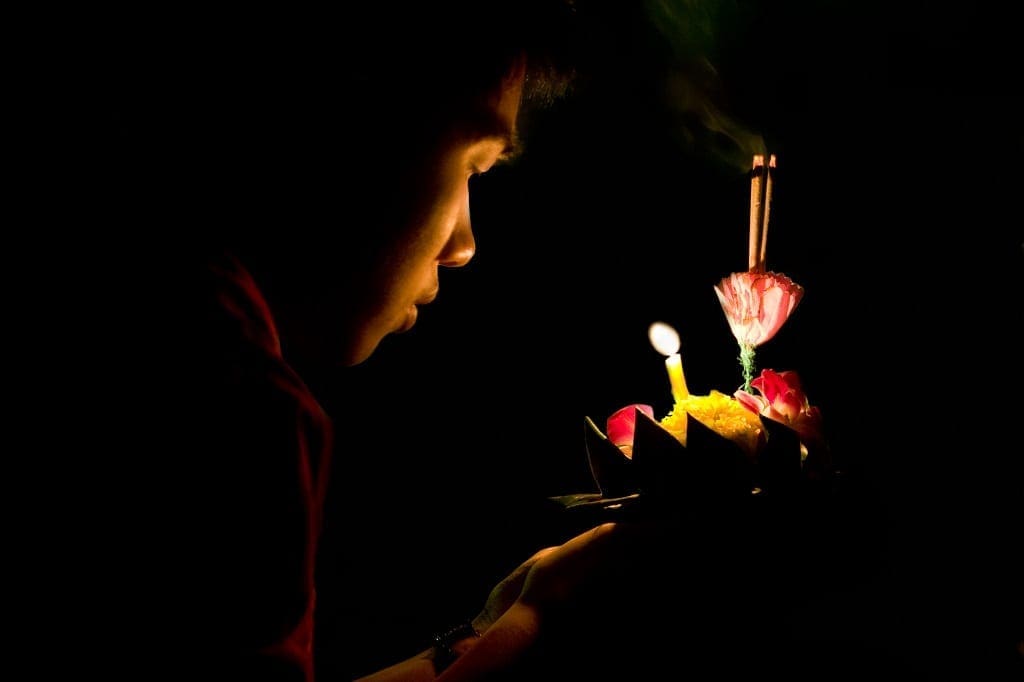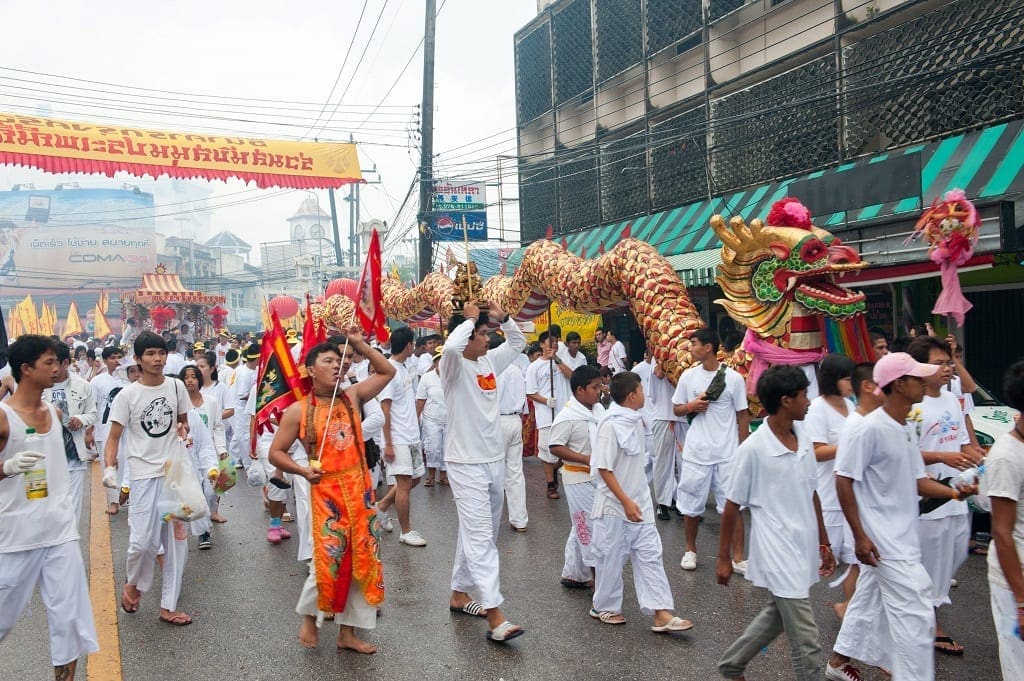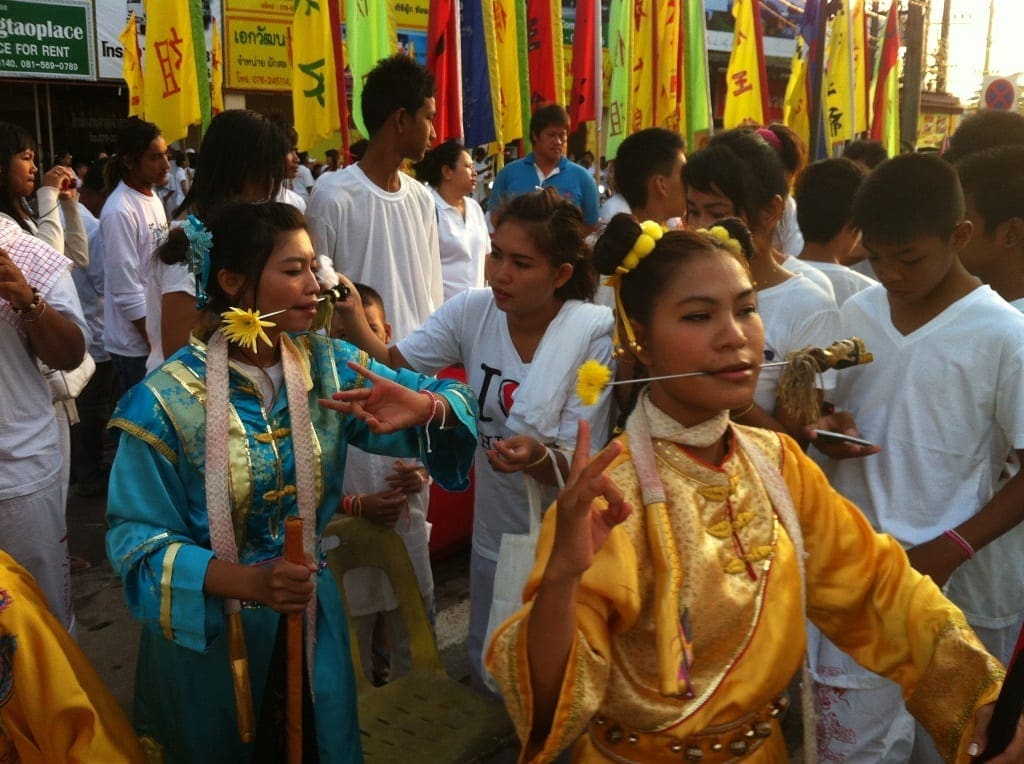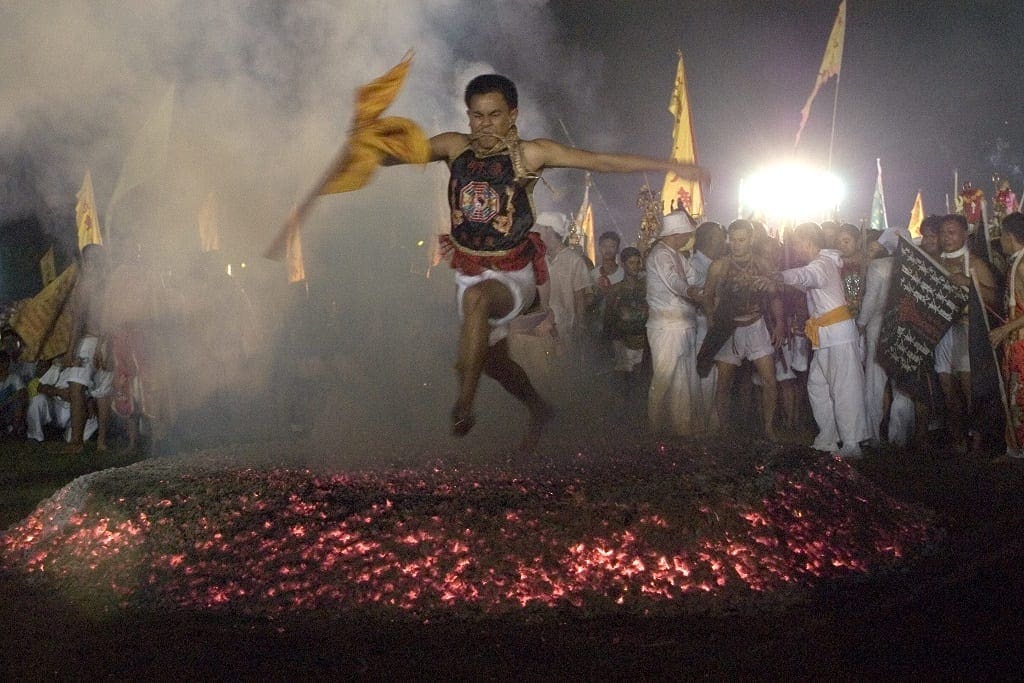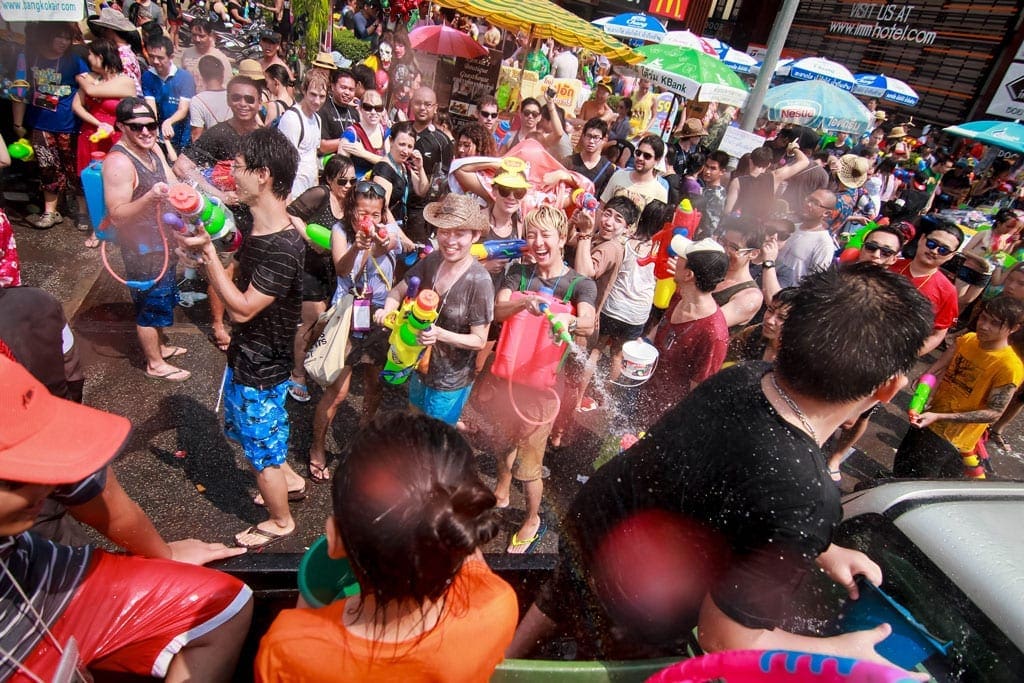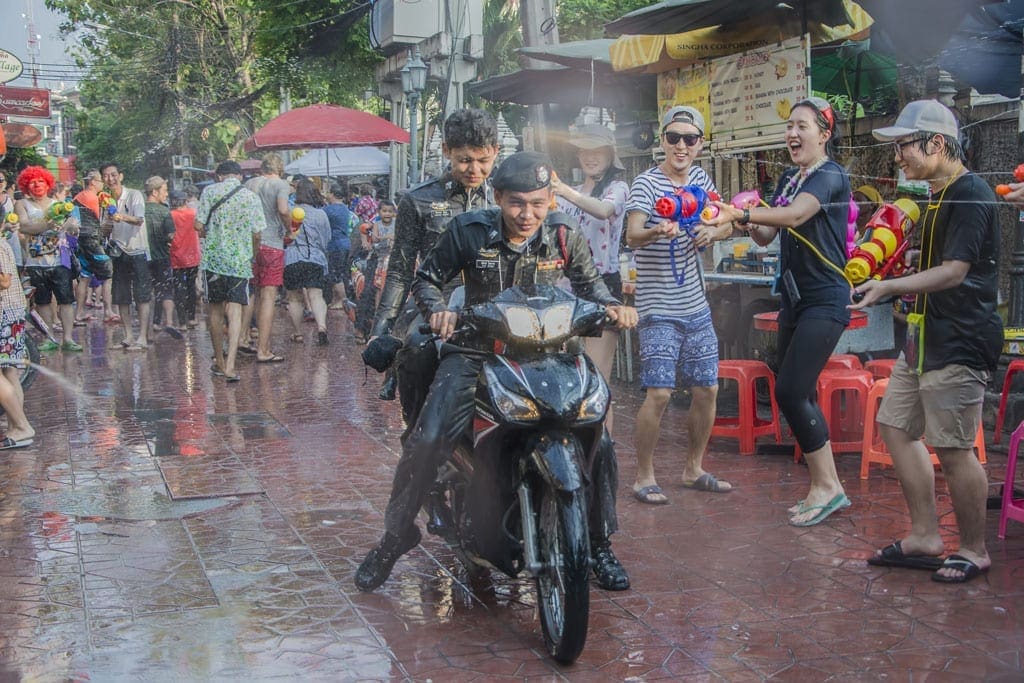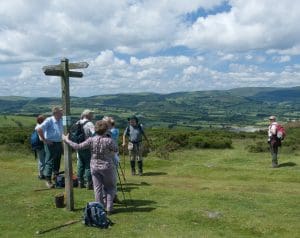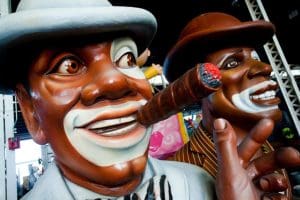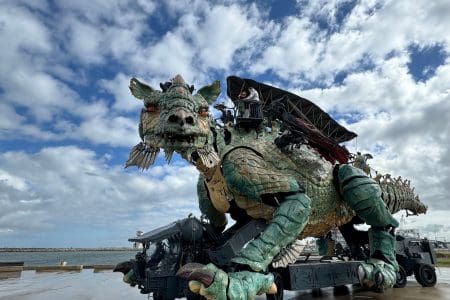Thailand is the most wonderful country, full of exciting travel opportunities, glorious beaches, rich cultures, stunning landscapes and a fabulous cuisine. You’ll always remember your Thailand travel and probably return for more.
History and culture buffs will delight in thousands of ornate temples, Unesco-protected archaeological sites and practice age-old dance and musical traditions. Enthusiasts of the outdoors and nature will love Thailand’s many national parks and its impressive offering of outdoor activities, while beach lovers and water sports fans are spoilt for choice with two different coast lines and hundreds of islands.
With an incredible wealth of variety and cultures on offer, it’s no wonder that Thailand is Southeast Asia’s most visited country
Photographers always find they return home with too many images to sort and foodies cannot stop raving about the flavours of Thailand’s aromatic regional cuisines – from classic street fare to international fine dining – long after they have left the kingdom.
With an incredible wealth of variety and cultures on offer, it’s no wonder that Thailand is Southeast Asia’s most visited country. There are plenty of Thailand tour packages to choose from. The north is most famous for mountains covered in thick jungle, hill tribe villages and a distinct culture related to the former Lanna Kingdom that ruled here from the 13th to 18th centuries. The south attracts hordes of people to its sandy beaches, year-round seaside resorts and islands with limestone cliffs rising from its waters. In the middle of it all, central Thailand is where the vibrant capital Bangkok lies – the world’s most visited city – and the Chao Praya River basin that forms Thailand’s cultural, political and economic heartland.
No less than 70 ethnic groups means each of the country’s four regions boasts its own history, culture, dialect and people. Add to that Thais famous laid-back mai pen rai (“never mind”) attitude as well as quirky customs and traditions displayed through a host of festivals all year round, and it’s no surprise that over 70% of overseas tourists to this country are repeat visitors.
Read on for more guidance on Thailand travel for the Over 40s.
Thailand Heritage and Culture
Thailand’s rich cultural heritage has been crafted over more than 700 years; a good place to start is the Unesco World Heritage site of Sukothai. Located in the lower part of northern Thailand and within easy reach from either Bangkok or Chiang Mai, the former capital of the 13th century kingdom of the same name, Sukothai is considered to be the first Thai or Siamese state. Nearly 200 ruins remain.
Some hundred years later Sukothai ceded power to the new Kingdom of Ayutthaya, which lasted until the late 18th century, and the remains of Siam’s second capital are another present-day Unesco site where you can explore Thailand’s heritage. Easily visited as a day trip from Bangkok, rent a bicycle here and cruise around the historical park’s monuments.
Although the Angkor Archaeological Park in Cambodia’s Siem Reap is the place to be for ancient Khmer heritage, Thailand’s Phimai Historical Park is a great alternative. Located in the country’s northeastern Isaan region, Phimai was once an important city in the Khmer empire and is one of Thailand’s most significant and oldest Khmer temple complexes with buildings dating from late 11th to late 12th century.
More recent historical landmarks are the infamous Bridge over the River Kwai and the Death Railway
Buddhist pagodas and palaces too are amongst Thailand’s top attractions with many of its most famous buildings located in the capital Bangkok and the northern city of Chiang Mai. (See Thailand City Breaks section below.)
With the monarchy and the wat – or temple-monastery – as Thailand’s two most venerated institutions, its national heritage is infused with elements drawn from traditional practices associated with the court and religion. You will encounter khon masked dance as well as classical Thai dance and music – both influenced by Hindu culture – everywhere on your Thailand travel, from tourist-frequented restaurants and resorts to festivals and weddings – but Bangkok’s National Theatre is your best bet for professional performances. In the south of the country you can pick up shadow puppet theatre or nang and in central Thailand traditional opera or likay.
More recent historical landmarks are the infamous Bridge over the River Kwai and the Death Railway – a Japan-constructed World War II railway line using POWs and Thai forced labourers – located in Kanchanaburi province, some 128km west of Bangkok. Although often swarmed with fellow tourists on their Thailand travel, they are a must if you’re interested in 20th century wartime history. A tourist train crosses the bridge during weekends but it’s more meaningful to take the regular local train in Bangkok that passes over the legendary bridge and the dramatic Wampo Viaduct on the Death Railway. Click here for all train details.
Did You Know?
Pierre Boulle, the French author of the original novel, muddled up the name of the river the famous bridge crosses – as it’s actually the Mae Khlung River. After the bridge became world famous with David Lean’s film adaptation in the 1950s, Thai pragmatism saw the river simply renamed as Kwae Yai or “Big Kwai”.
Thai craftsmanship has gained international repute in recent years, with Thai silk designs and colours highly prized both domestically and abroad, while ethnic minorities living in the highlands produce quality embroidered textiles and hand-woven cotton. Bangkok is the place to buy jewellery using rubies and sapphires, but make sure you know what you are buying and go to reputable jewellers, while in the north you can shop for silverware, with other regions specialising in wood carving, lacquerware, ceramics and pottery – notably the jade-green colour known as Thai celadon.
Muay Thai or Thai boxing is another important and more action-oriented part of Thai heritage with a history that can be traced back to the middle of the 18th century. A typical match is accompanied with pre-fight traditional dance, folklore and symbolism, and can be watched all over the country. The Thai Boxing Stadium in Bangkok is the country’s best known venue to attend a muay Thai contest.
For more peaceful drama, watch a locally-made film to get an authentic taste of Thai culture as you prepare for your Thailand travel. Both Youngyooth Thongkongthun’s The Iron Ladies – about a transvestite volleyball team – and Ekachai Uekrongtham’s Beautiful Boxer – a biographical film about a famous Thai boxer’s gender-reassignment – have won numerous international awards.
Latest Thailand Travel Industry News
Outdoors and Nature in Thailand
The country’s nature is of such variety that nearly any outdoor activity can be enjoyed on your Thailand travel. Attracting millions of tourists each year, the country’s beaches and over a thousand islands, tend to get crowded in peak season, but there are plenty of unspoilt options to explore.
As well as its famed beaches, the south boasts lush rain forests. One of the best places to combine both of these is the beach resort of Khao Lak on the Andaman west coast which is close to the majestic rain forest of Khao Sok National Park and the Ko Similan islands – the latter being Thailand’s finest diving destination.
Still in the south, the craggy limestone cliffs of Rai Leh make for one of the world’s best rock climbing spots. On the other side of the peninsula, in the Gulf of Thailand, the Chumphon Archipelago has two marine national parks and a wide offering of both tourist-friendly and unspoilt islands – good for snorkelling and sea kayaking.
If you are looking for beaches, there are Pattaya and Koh Samui, but you knew about those before you started reading this. If you have some money for a splurge on your Thailand travel, there’s Koh Kood/Koh Kut, an island in the east near the Cambodian border, or, less pricey and with low key facilities, Koh Chang. On the west side, Railay Beach near Krabi is still quite quiet and has the spectacular limestone peaks for which the region is noted.
Thailand is not a world class destination for surfing, though from April to October, which is luckily the off season, there are small and, if you are lucky, moderate waves around Phuket. The small beach of Kata has the most developed infrastructure, though beginner schools can also be found at several much quieter beaches. At Bang Tao, with a swell, waves can reach three metres and be good for mid-level surfing. If you seek to avoid the rush of Phuket, consider Koh Lanta, though the waves are smaller.
Northern Thailand is also one of the best motorcycling destinations in the world
Jungle trekking is concentrated in the highlands of the north with Doi Inthanon at 2,565 metres, the country’s highest point. Smaller trekking spots that are less visited by tourists include Sangkhlaburi in Kanchanaburi province northwest of Bangkok, and Umphang in the south of Tak province – both of them bordering Myanmar.
Northern Thailand is also one of the best motorcycling destinations in the world, while mountain biking has in recent years become increasingly popular with Thais. Other adventure activities include zip-lining through forest canopy in Chiang Mai and caving in Mae Hong Song province, or you can even drive your own tuk tuk. If you have energy to spare then cycling is another great option for your Thailand travel. Check out the Spiceroads Cycling and Bicycle Thailand websites for further resources on cycling in Thailand.
Various rivers in north, west and south Thailand are good for white water rafting, and the omnipresent waterfalls are best observed just after the rainy season. Thi Lo Su, a 300-metre-high and 500-metre-wide waterfall in Umphang’s Wildlife Sanctuary, is the country’s highest and largest.
Thailand’s 100+ national parks are the best places for observing wildlife with chances of spotting hornbill, mouse deer, civets and gibbons. Although being the country’s national symbol, the elephant has greatly declined in number with more in captivity now than in the wild. Poaching of protected species remains a major problem while wild animals used for tourist attractions are frequently mistreated. Read here how to select a genuine animal sanctuary before you pay a visit on your Thailand travel.
Thailand Travel Top 5 Cultural Exports
Pad Thai, the iconic dish
Muay Thai, boxing gone global
Nuat Thai, ancient healing massage
Krating Daeng, the original Red Bull
Siamese cats
Thai Wellness
Thailand’s wellness tourism market is now ranked fourth in Asia after China, Japan and India, and keeps on growing every year. It’s the country’s own natural resources – plenty of sunny beaches, lush forests and indigenous health foods and herbs – together with its meditation-centred main Buddhist religion and a developed tourism infrastructure that makes it one of the world’s prime destinations for wellness holidays.
The country’s wellness industry covers the entire spectrum from internal care such as detoxification programmes, alternative medicine and meditation, mindfulness and yoga retreats to external care, including spa and beauty services, Thai massage and medical tourism. Almost every resort and hotel in Thailand offers some kind of spa or vitality service, while Thai massage forms an essential part of traditional Thai living and ranges from cheap no-nonsense therapeutic massage in small roadside shops via barely disguised erotic massage services, to the most luxurious and comprehensive treatments in five-star resorts. In fact, Nuad Thai or traditional Thai massage has now even been listed by Unesco as an Intangible Cultural Heritage of Humanity.
On the island of Koh Samui, the award-winning Kamalaya Resort stands out
With such a range of offerings, Thailand is a good destination to find something that suits your needs and the best facilities can be found in the capital Bangkok and other major tourist destinations, such as Chiang Mai and Chiang Rai in the north and Hua Hin, Phuket and Koh Samui in the south.
On the island of Koh Samui, the award-winning Kamalaya Resort stands out as well as Absolute Sanctuary and Samahita Retreat. Further south in Phuket are Atsumi Healing, Santosa and AmanPuri while closer to Bangkok on the mainland in Hua Hin are Chiva-Som and The Barai. The Bangkok Float Center, Omroom and The Orchid Massage and Nails Spa are just a few of many in the capital while in the north the Dhara Dhevi, The Spa Resort and The Pavana Resort are some choices in Chiang Mai with the Museflower Retreat a good option for yoga in Chiang Rai. These are just some of a seemingly endless list of wellness offerings in Thailand – it is recommended to invest enough time in proper research to find the one that best suits your needs before booking.
Gastronomy – Thai Cuisine
Pad Thai, som tam and tom yam have become household names all over the world and it is Thai cuisine that best epitomises Thai culture and people. Varied, flavourful, relaxed and spicy, it is built around five fundamental flavours – spicy, sweet, salty, bitter and sour. Thai cuisine has rice as its staple and uses ingredients that are typically fresh and local. Common examples include lemongrass, garlic, lime juice, galangal, palm sugar, coriander, fish sauce and, of course, chillies.
The 2018 Michelin Guide Bangkok – the first one to the Thai capital – has awarded one of its coveted stars to the street food restaurant Jay Fai, famous for its crab omelettes, crab curries and dry congee. The French red book further lists 16 other starred restaurants and singles out 35 establishments for their excellent value for money, making the City of Angels the most affordable Michelin Guide city in the world.
Even if the capital offers the widest variety of both local and international cuisines, throughout the country there are distinct regional variations.
The influence of Burmese, Shan and Yunnan Muslim minorities makes the north a heaven for noodle lovers
Thanks to its cooler mountain climate, the north has more variety in vegetables and herbs with bitter and sour flavours prevailing. Sticky rice or khao niaow is the preferred staple here instead of white rice, often paired with som tam or spicy green papaya salad. The influence of Burmese, Shan and Yunnan Muslim minorities makes the north a heaven for noodle lovers.
The northeast, better known as Isaan, caters less to tourists because of its remoteness, yet its dishes are loved and unique with the ingredients often boiled or grilled instead of fried. This being a poorer region, people are more resourceful, with frogs and insects appearing as specialties on menus. Try kai yang or grilled chicken here, prepared with garlic, coriander, black pepper and fish sauce.
If you look for more intense flavours, the south offers the spiciest and saltiest dishes of the country, and an abundance of seafood. While curries in the north are thin, here they are very thick with coconut milk and borrow flavours from Malaysia and Indonesia. A common dish is kaeng tai pla, a hot curry including fish, green beans, potatoes and pickled bamboo shoots.
With such a rich cuisine, it’s no wonder that many travel operators and hotels offer culinary tours and cooking classes which have become one of the more popular things to do for tourists on their Thailand travel.
Thailand City Breaks
Earth’s most visited city in 2017 – the second year in a row – Bangkok hardly needs introducing. Many of Thailand’s most significant sites are located here, especially in what is called Rattanakosin or the city’s historic centre that contains dozens of pagodas, palaces, museums, monuments and parks. They include Wat Pho, one of Bangkok’s oldest temples and home to a 45-metre-long reclining Buddha, and the Grand Palace – arguably the country’s most significant building – a collection of monuments that house much of Thailand’s history.
Wat Phra Kaew or Temple of the Emerald Buddha is the Grand Palace’s biggest attraction and the kingdom’s most revered shrine. Opposite the Palace, across Bangkok’s Chao Praya River, stands the 17th century Wat Arun. Known as the Temple of Dawn, its 70-metre-high tower – the exterior of which is made of coloured glass and Chinese porcelain – is covered in an iridescent sheen every time it’s hit by the morning’s first rays of light.
Heavily promoted tourist boats take you up and down the Chao Praya River and into its many small khlongs or side canals where you can visit floating markets and watch locals ply their trade. A more authentic alternative is to join the locals and hop onto a commuter boat of one of more than 15 lines – and see where it takes you.
Thailand’s capital seems to have it all – a multitude of historical sites, world class shopping, fine dining and a vibrant nightlife ranging from trendy rooftop establishments to the seedy bars of Patpong. Despite its popularity, the Thai capital is also one of the least-understood places to outsiders. Large, busy and anarchic, this is where narrow sois and small, intimate neighbourhoods hide amongst the steel and glass towers that keep sprouting up all over the city. But those willing to spend a bit of time and effort will discover a city that has much more to offer than what the brochures promise. From artistic and creative spaces to old school department stores and old hidden mansions in ever-changing Chinatown, Thailand’s capital never ceases to surprise.
Despite its popularity, the Thai capital is also one of the least-understood places to outsiders
Visitors to the north of the country usually end up in Chiang Mai, the former capital of the Lanna Kingdom some 700km away from Bangkok. With its slow and relaxed lifestyle and easy access to incredible nature, it has become a new home to retired expats, blogging and computer-coding millennials calling themselves digital nomads, and Thai Bangkokians who long for a slower pace in life.
Here, in the Rose of the North, you will find some of the most beautiful wat structures with ornamental decorations including gold leaf, glass mosaics, lacquer, porcelain, stucco and mother-of-pearl. Overlooking the city from an altitude of 1,056 metres, the 14th century Theravada Buddhist Wat Phra That Doi Suthep is probably northern Thailand’s most sacred temple and a beautiful example of Lanna architecture. For more contemporary Thai heritage, visit Chiang Mai’s newly established contemporary art museum MAIIAM with its impressive collection of works by established and emerging Thai artists.
While having become saturated over the past two decades with local and foreign tourists, there are still left plenty of undiscovered things to do and explore in Chiang Mai that will help you unlock the heart of northern Lanna culture.
A few overlooked cities and towns in Thailand deserve a visit for their own sake. They include the small northern towns of Mae Sariang and Mae Hong Son with their Burmese influences from right across the border; the charming city of Nong Khai in Isaan and gateway to the Laotian capital Vientiane; and Phetchaburi southwest of Bangkok with its temples, cave shrines and old teak shophouses.
Festivals in Thailand
Thailand has dozens of festivals, many nationwide with others specific to a certain province or region. Ranging from beautiful, intimate and enchanting to fun, crazy and downright bizarre, they’re a great way to experience Thailand in all its colour and diversity.
Possibly the most popular festival for both locals and foreign visitors is Songkran or Thai New year starting on 13 April, the nation’s longest public holiday. This is when the entire country celebrates the end of the dry season by cleaning their houses and Buddha statues, and by throwing water at one another which often escalates into giant, spectacular and fun water fights, but be sure to wrap up your phone and other valuables in plastic before joining the riotous throng.
The Festival of Light or Loy Krathong is probably Thailand’s most beautiful festival. In this spiritual event that usually takes place in November, people nationwide honour Buddha and the goddess of the river with music, parades and krathongs – small floats containing a candle, flowers or incense and set adrift on water to carry away bad luck and begin a fresh start. Around the same time, the Yi Peng lantern festival is celebrated in Chiang Mai resulting in paper fire lanterns released into the night sky while thousands of krathong lights float down the Ping River.
The Lopburi Monkey Buffet Festival sees thousands of monkeys feasting on a huge banquet that is laid out to them
Also in the ‘Rose of the North’ is the Chiang Mai Flower Festival in February, a dazzling and fragrant display of colour when floral floats parade along Charoen Muang Road.
More spectacular of the worrying kind are the rocket festivals or Boon Bang Fai in the farming villages in Isaan to mark the beginning of the planting season and to encourage the gods to send plenty of rain. Teams compete to shoot the biggest rockets into the sky while loud folk music, beauty pageants and plenty of rice wine provide additional colour.
Also quite spectacular but in terms of beauty rather than potential danger, is the Candle Festival that takes place in July at various locations throughout Thailand, with colourful parades showing off floats with giant, intricately-carved candle wax sculptures, as well as traditional dance and music.
On the more bizarre end of the festival spectrum are the Ghost Festival (Phi Ta Khon) in Dan Sai, Loei Province when locals put on colourful masks, wear bells and wave wooden phalluses (between March and July), the Phuket Vegetarian Festival where participants mutilate their bodies with extreme and bloody piercings (October), the Lopburi Monkey Buffet Festival that sees thousands of monkeys feasting on a huge banquet that is laid out to them (November) and the Buffalo Racing Festival (Wing Kwai) in Chonburi where jockeys ride their surprisingly fast massive animals (usually in October).
Some others you might choose to visit include the Thaipusam and Hua Hin Jazz Festival.
A Selection of Thailand Festivals
What’s in a Name?
Bangkok is known by Thais as Krungthep but its real and official name is Krungthepmahanakhon Amonrattanakosin Mahintharayutthaya Mahadilokphop Noppharatratchathaniburirom Udomratchaniwetmahasathan Amonphimanawatansathit Sakkathattiyawitsanukamprasit, meaning “City of Angels, Great City of Immortals, Magnificent City of the Nine Gems, Seat of the King, City of Royal Palaces, Home of Gods Incarnate, Erected by Visvakarman at Indra’s Behest”, which makes it the world’s longest capital city name and a sort of city guide in itself.
Weather in Thailand
Broadly speaking, there are three seasons in Thailand – cool, hot and wet – while there are two seasonal monsoons. However, climate patterns differ regionally within the country.
Mid-May till mid-October sees the southwest monsoon bring lots of rain across most of the country, especially in August and September with dry spells of one or two weeks from June to early July. The northeast monsoon brings cool and dry air from mid-October till mid-February over most of Thailand, but not in the south where the east coast receives abundant rain and mild weather during that period, especially in October and November. The pre-monsoon season with its hot temperatures typically runs from mid-February till mid-May.
In January 2014 the temperature in Bangkok fell to 15.6°C, which is the coldest recorded temperature in over 30 years.
When to Go on Your Thailand Travel?
There’s no real bad time for your Thailand travel, as each season has its up and downsides depending on what you’re interested in. Most popular is the cool season which is also the busiest.
If you come for the beaches then December to March is a good period for the Andaman (west) coast but not the Gulf (east) coast, which sees rain from October to January. For scuba diving, October to April is good at the Andaman Sea and June to September at the Gulf of Thailand. Avoid Bangkok during the hot season when you’re better off at the beach.
Temperatures vary more in the north where they can approach zero at higher altitudes during the cool season. November and December are good months for trekking there.
If you want to visit Isaan in the northeast then avoid the hot season as this brings clouds of dust, parched fields, humid air and frustrated farmers. The wet season is not as bad as you would expect – waterfalls are thick, paddy fields are deep-green and cloud formations turn the sky into dramatic scenery. If you’re a photographer then you will love this season as the quality of the light is best during this time.
Latest Thailand Travel Features & Articles
Visas for Thailand
Passport holders of most EU countries, including the UK, can enter Thailand visa-free for a maximum period of 30 days when entering via an international airport or land border checkpoint. You are required to show a confirmed return ticket if asked. Failure to do so may result in entry being refused.
Many countries get visa on arrival in Thailand. Find out if you need a visa to visit Thailand here.
Flights to Thailand
Most travellers fly into Bangkok’s Suvarnabhumi international airport to start their Thailand travel while there are five more international airports in Thailand at Chiang Mai, Hat Yai, Krabi, Phuket and Ko Samui.
Non-stop flights serve Bangkok from most major European capitals, while British Airways, Qantas, Thai Airways and Eva Airways all fly directly to Bangkok from London.
Don Mueang airport in Bangkok is the budget airline hub serving Air Asia regional flights as well as many domestic flights, making the capital the hub not only for Thailand travel, but those across the region.
Our Thailand Travel Special Offers
Getting Around Thailand
Domestic flights are affordable with low-cost carriers such as Nok Air and Air Asia serving destinations all over Thailand, making this a good option for getting around on your Thailand travel.
An extensive network of buses comes with different levels of comfort. Most reliable are those leaving from Baw Khaw Saw (BKS) terminals while the so-called “VIP” buses offered by agents in tourist areas are to be avoided.
Trains are a great way of getting around Thailand if you are not particularly pressed for time. There are four main lines – Northern, Northeastern, Eastern and Southern – with the journey between Bangkok and Chiang Mai popular for its scenic views. Long distance trains leave from Bangkok’s beautiful Hualamphong Train Station. For detailed information visit The Man in Seat Sixty-One train travel site and the website of the State Railway of Thailand.
Hailing a Thai tuk tuk – a motorised rickshaw – is often a convenient way to get around
Plenty of ferries connect all major islands with the mainland. Tickets can usually be purchased on board. Avoid boats that are overcrowded or in poor condition – especially in poor weather – and always make sure you have easy access to a life jacket.
Within bigger tourist-frequented cities such as Bangkok and Chiang Mai, hailing a Thai tuk tuk – a motorised rickshaw – is often a convenient way to get around while registered taxis are a comfortable and cheap alternative if you don’t get stuck in traffic. The capital Bangkok also has an extensive and efficient light rail network consisting of the BTS Skytrain and MRT Subway.
If you want to drive by yourself you can rent a car or even better, a motorcycle. Choose a reputable dealer and make sure you include insurance. You will need an International Driving Permit and also a helmet if you drive a motorcycle. Be aware that Thailand’s roads are amongst the deadliest in the world for road fatalities with about 75% of accidents involving motorcycles. However, if you are an experienced motorcyclist, don’t let this discourage you from exploring northern Thailand’s incredible motorcycle roads – just be prepared. Read here for motorcycle rental tips on your Thailand travel.
Health and Safety in Thailand
Health and safety is the number one concern for anyone travelling to an unfamiliar land. Below is our list of do’s and don’ts on your Thailand travel.
- Motorcycle accidents is the number one cause of death for foreign travellers on their Thailand travel (see previous section for tips).
- Drug laws in Thailand are notoriously strict and may lead to life imprisonment or even the death sentence. Just stay clear of any drugs.
- An Islamist insurgency in the deep south near the border with Malaysia has seen deadly attacks and bombings with many people killed – however, most of these areas are off the tourist trail, so it should not impact upon your Thailand travel. There were deadly explosions in central Bangkok in April and May 2017. Always check your government’s latest travel advice before departing on your Thailand travel – for British citizens, consult the UK government’s foreign travel advice for Thailand.
- Thailand has one of the strictest lèse majesté laws in the world with long prison sentences. Stand up when the national anthem is played (e.g. in cinemas), always treat any images of the king and royal family with respect (including on Thai banknotes), be careful what you post on social media and simply avoid discussing anything about the topic.
- Thailand also has its fair share of scams and thefts, especially in popular tourist areas. Use common sense and err on the side of caution.
- Stray dogs can be a problem sometimes. While many of them are harmless, some dogs can be quite aggressive and carry rabies.
- Make sure you’re up to date with all your recommended health vaccinations. Consult your doctor for advice before departing on your Thailand travel.
Thailand SIM Cards / Internet
You can buy a local SIM card with any of Thailand’s three mobile phone operators – TrueMove, AIS and DTAC – provided you show your passport. There are good 7-day or longer deals on offer at Survanabhumi airport upon arrival on your Thailand travel. You can top them up at any 7-Eleven shop. Coverage is pretty decent throughout the country with AIS and DTAC better than TrueMove, especially in rural areas. WiFi is widely available in coffee shops in cities.
Languages in Thailand
The official language in Thailand is Thai and spoken as a native language by about 30% of the population. There are many other minority languages of which the most widely spoken is Lao, considered a dialect of the Isaan language in the country’s northeast. Yawi, a dialect of Malay, is spoken by the majority of ethnic Malay Muslims in the south while Khmer is spoken near Cambodia, and Karen languages along the border with Myanmar. The Thai government recognises 62 ethnic groups in Thailand.
Currency in Thailand
Thailand’s currency is the Baht (THB) with around 33 Baht to one US dollar.
Thailand Timezone
Thailand has one time zone which is GMT / UTC +7. There is no daylight saving time.
Thailand Country Code
Thailand’s dialling code is +66.
Booking a hotel or flights for your Thailand travel? Look no further.
Are you booking a hotel, a budget hostel, or a five-star resort for your Thailand travel? Our hotel and flight comparison engine will help you find the best flight and hotel deals from around the world. Each booking also helps to support our website while still getting you a great deal on booking hotels and flights. Get started below.
We search hundreds of online travel agent (OTA) websites to find you the best available deals on Thailand hotels and flights to Thailand. Your booking is made directly and securely through the travel operator website (e.g. Agoda, Booking.com), we don’t handle your bookings or any payments directly.

